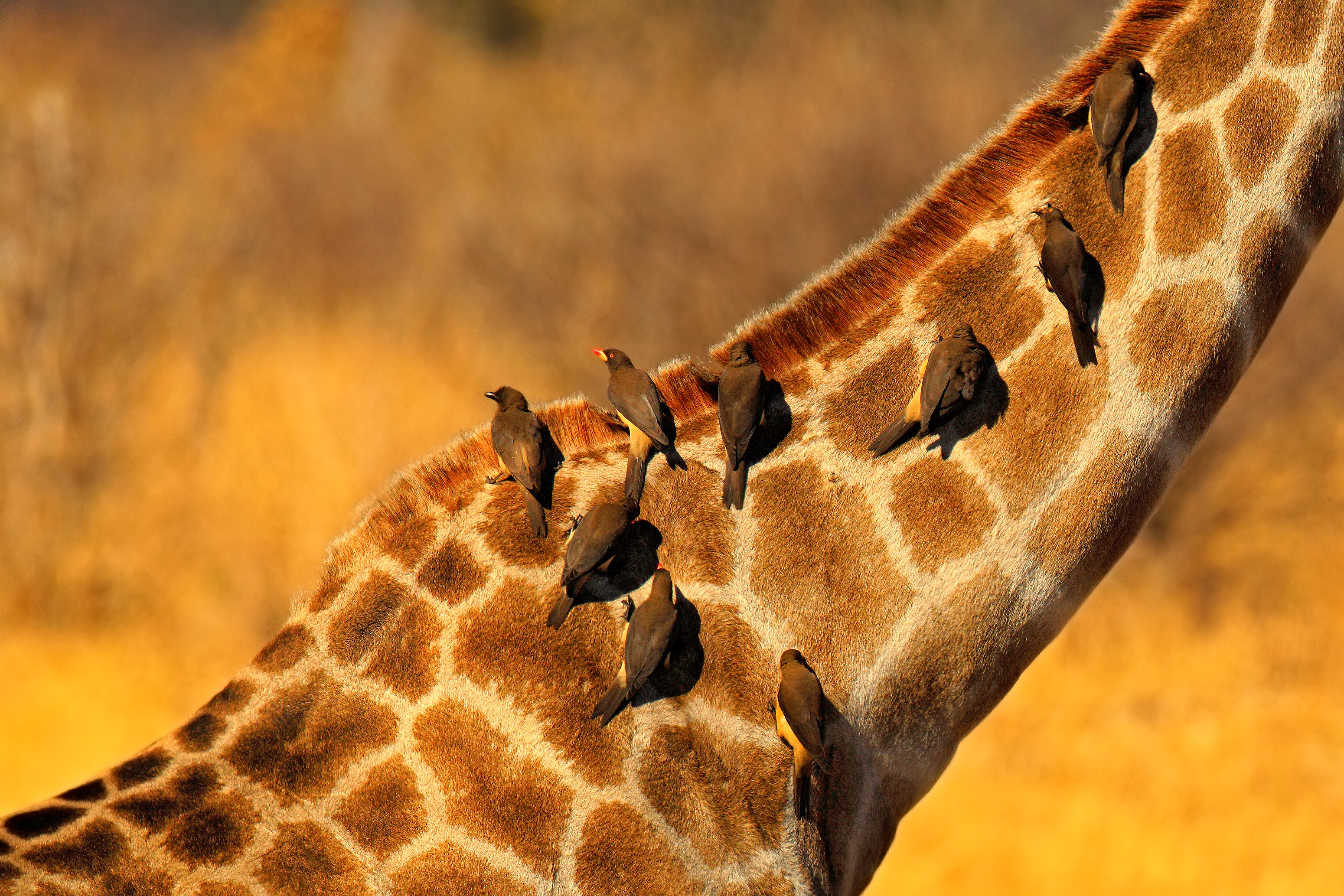
Spots: Each giraffe has a pattern of spots that is completely unique to them, much like a humans’ fingerprint. Interestingly male giraffes often have thicker ossicones than females, which become bald on top due to frequent necking. Both males and females are born with their ossicones but they lie flat at birth and are not attached to the skull in order to avoid injury to themselves and the mother, fusing to the skull as they grow older.
#Giraffe predators threats skin#
Horns: Giraffes horns are actually known as ossicones and are found in both males and females, they are formed from ossified cartilage and covered in skin and hair. The giraffe’s neck has a very complex system that regulates their blood pressure, ensuring that plenty of blood gets to their brain but not too much when they bend down to take a drink. This is a ritualised fight that appears to help establish dominance, and involves repeatedly swinging their neck to deliver head-butts to the other bull on their body and belly. The neck is also used for ‘necking’ in Bulls. This allows giraffes to reach the highest leaves and shoots up in the Acacia tree (their favourite food source), which others browsers cannot reach, whilst also keeping an eye out for predators from their vantage point.

We expect similar decision rules to drive the distribution pattern of ungulates in other African savannas and in other multi-predator systems, especially where predators differ in their hunting modes.Neck: One of the distinguishing characteristics of a giraffe is its long neck. In general, selection and avoidance of habitats was stronger than avoidance of the predator activity areas. Instead, ungulates used a simpler behavioral rule of avoiding the activity areas of sit-and-pursue predators (lion and leopard), but not those of cursorial predators (cheetah and African wild dog).

The strength of avoidance for the space use of predators generally did not correspond to the relative predation threat from those predators. To reduce the probability of encountering predators, most of the smaller prey species (impala, warthog, waterbuck, kudu) avoided the space use of all predators, while the larger species (wildebeest, zebra, giraffe) only avoided areas where lion and leopard space use were high. All ungulate species avoided risky habitats, and most selected safer habitats, thus reducing their probability of being killed. To determine how ungulates minimize predation risk at the landscape level, we explicitly tested five hypotheses consisting of strategies that reduce the probability of encountering predators, and the probability of being killed.

Using observed kill data, we generated ungulate-specific predictions of relative predation risk and of riskiness of habitats.

Here we examined the distribution of seven African ungulate species in the fenced Karongwe Game Reserve (KGR), South Africa, as a function of predation risk from all large carnivore species (lion, leopard, cheetah, African wild dog, and spotted hyena). Yet there is still a general lack of information about the strategies of prey to minimize predation risk from multiple predators at the landscape level. Studies that focus on single predator-prey interactions can be inadequate for understanding antipredator responses in multi-predator systems.


 0 kommentar(er)
0 kommentar(er)
